
FluentU helps you learn fast with useful questions and multiple examples. Learn more.
If they both look professionally made (written) and have great ingredients (content), it’s hard to say no.
Date: (Write the date. Just stick to month and day and you can’t go wrong, e.g. December 9. Don’t forget months are capitalized in English.)
Here are some example headings you can use in your business report:
Categories

To keep the purpose of the report in mind, make a plan before you start writing. If you don’t have the time to write a full draft, try to focus on the main ideas you need to include.
Make sure your bullet points follow the same grammatical structure. For instance, you may have something like:
Spellcheck may seem like the best invention ever when you are writing reports as part of your job. Remember that spellcheck tools can’t find all mistakes, though.
Active: The managers need to make changes in their management style.
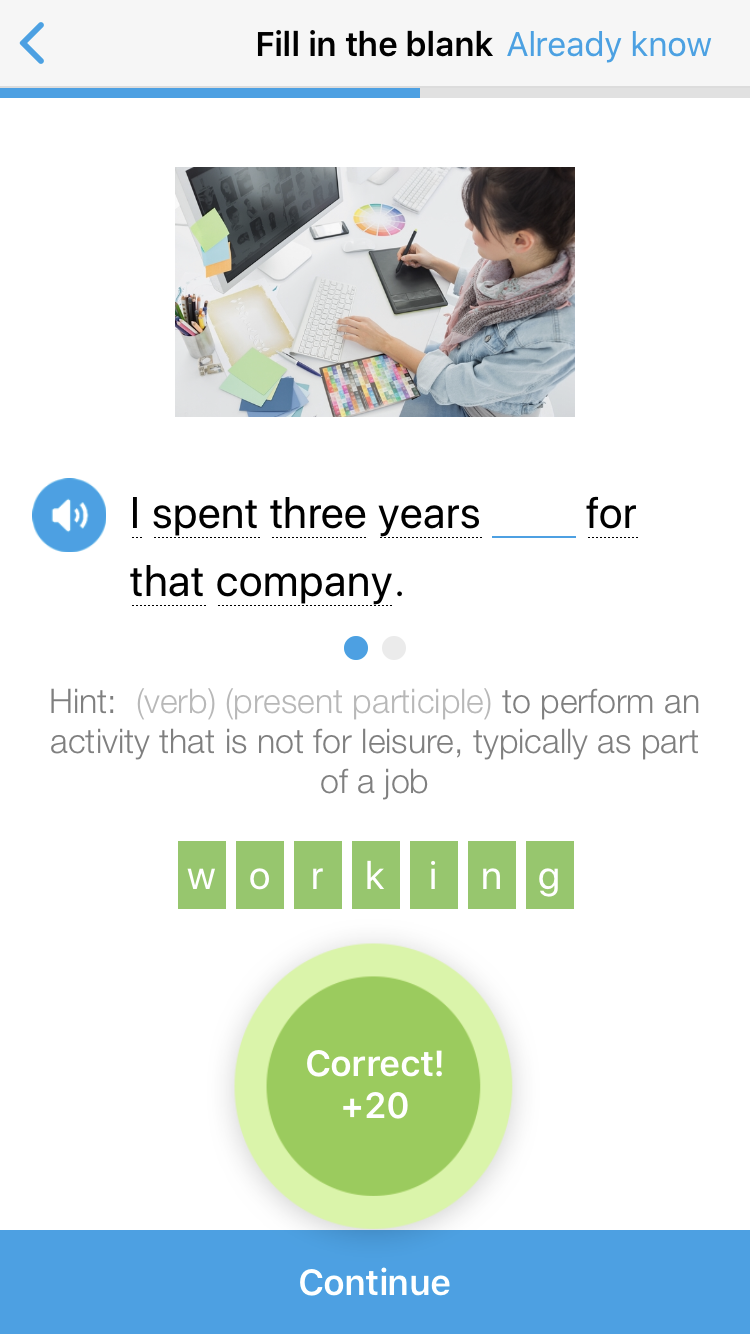
It has both books and courses that can help you learn all about powerful and professional English writing.
Use compound nouns to help achieve a formal, business-like tone. This will also help to keep your writing clear and to the point. For example:
Creativa has professional actors and goes deep on body language and intonation.
Carefully-made cakes and business reports can be a joy to consume.
Use bullet points
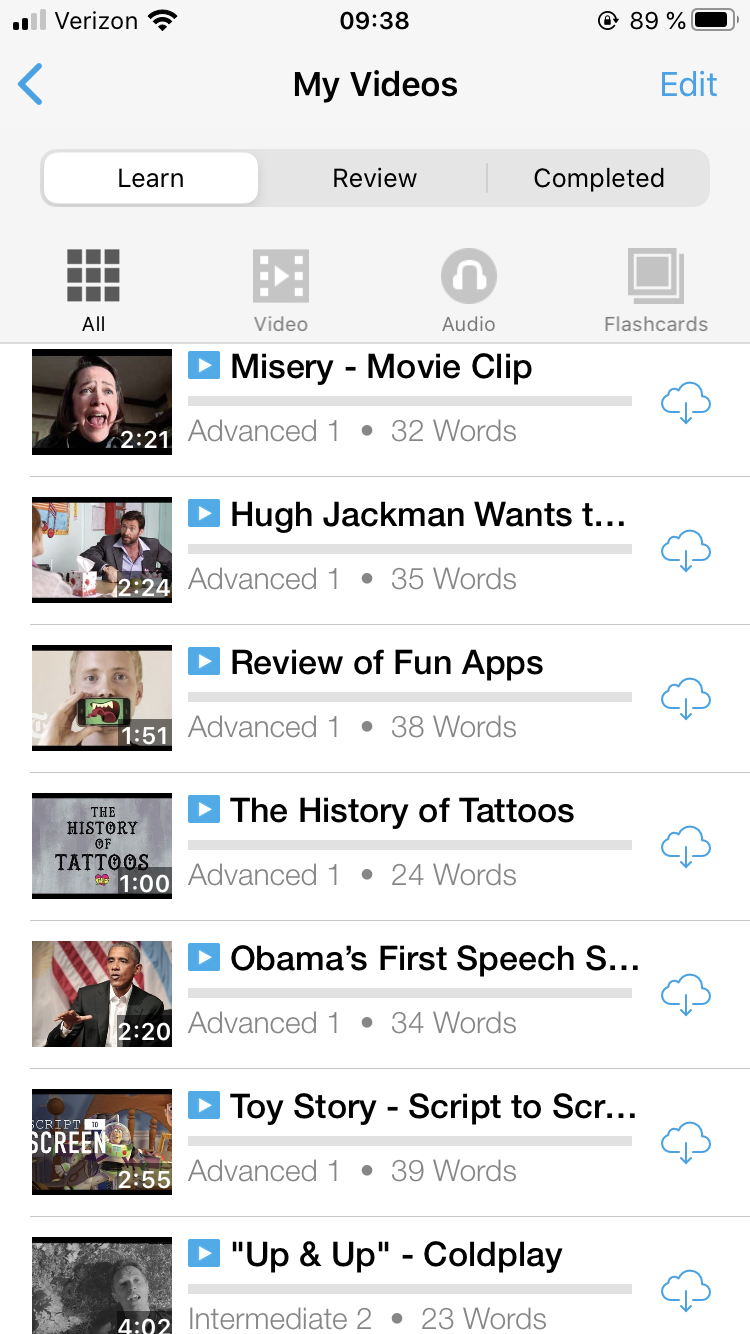
FluentU lets you learn engaging content with world famous celebrities.
Make sure your bullet points follow the same grammatical structure. For instance, you may have something like:
However, don’t overuse bullet points—especially in writing exams, where you need to prove your ability to use a variety of complex grammatical structures.
Since the reader is probably somebody higher up, so you should try to use a neutral tone, maybe even a formal one. Here are two language tricks you can use to help achieve a formal tone.

This is the section where you list all your sources if it’s a research report. You should also add any links that are relevant to the report – or previous reports about the same topic.
- Write the body of the report before writing the introduction or conclusion.
- Use as much visualization as possible, but not “just for the sake of using visuals.” Make sure every visual has a purpose.
- Review your writing skills to craft a well-written report. For example, use active voice and refrain from using too many acronyms. Also, use simple language and stay away from word stuffing.
- Stick to the facts! Be clear and concise.
- Use a grammar checker like Grammarly . Even your best KPIs and ROIs won’t save you from bad grammar.
- Try to keep the appendix small. Don’t make it so long that it gets burdensome.
Close your report with a well-crafted conclusion . Formulate it as a brief summary of what was covered within the report, and be sure to include a mention to the recommendations section and the resources in the appendix.
A good rule of thumb when creating your appendices is to only add information that is relevant to the report or that you referenced when writing your report. Use reference annotations inside the report to link to the content in the appendix.
Element #7: Recommendations

One report that is helpful to provide your team is a weekly report based on your progress in various projects and goals. This can be a simple one-pager, or a more in-depth report with specific updates.
The most important part of your outline is the Body section. In there, create an internal outline of sections and subsections that you can follow later when writing.
The report content used in this sample report design can be found here.
Furthermore, use bullet points and data visualization as visual cues . These will help your audience to better understand the content of your report.
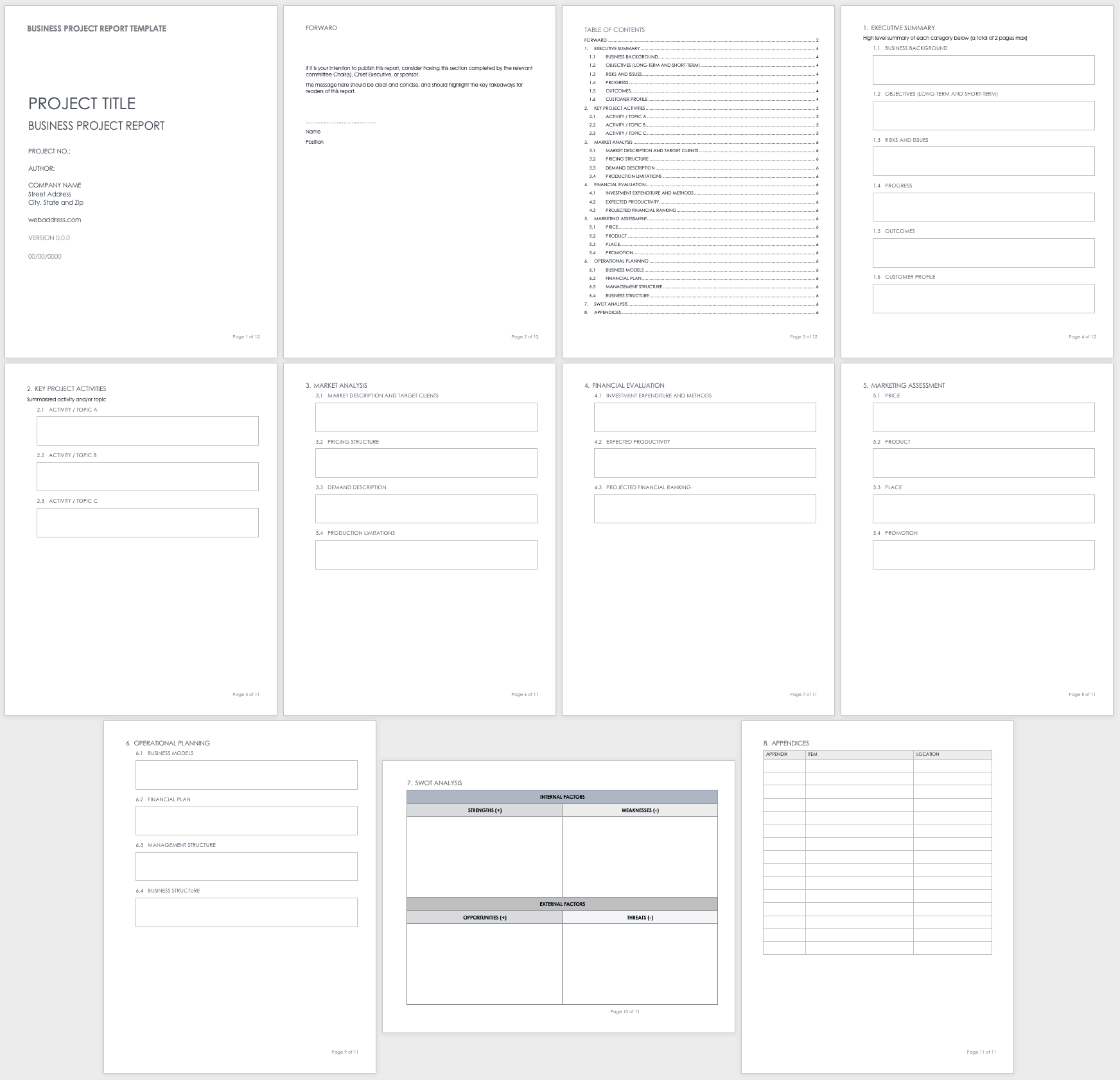
This business budget template will help you track your company’s expenses and develop a balanced budget. Simply enter all budget-related details for your current goods and services (your “operating costs”) to immediately see if you’re under or over budget in a particular area. Use this template to gain fast insight into your assets and liabilities, and see how profitable — or close to profitable — your company actually is.
To learn more about this process and to find additional resources, read “Free Strategic Planning Templates.”
A business case can provide you with an on-the-spot cost benefit analysis (CBA), show you the risks to assess prior to greenlighting a project, and help you understand why to choose a particular strategy. This simple business case template provides sections for project reasons, options, benefits, costs, risks, schedule details, assessments, and your final recommendation. Ultimately, it helps ensure that your business case is strategically sound.
A business plan executive summary presents stakeholders with a broad-strokes preview of what is usually included in a more detailed business plan report. In short, it provides them with the essence of your business plan. After reading the summary, readers should understand your business plan’s mission, end goals, and all details in between. This template provides space to include your company’s mission and vision, a description of products and services, value proposition, market analysis, financials, and more.
Sales and Marketing Plan Template
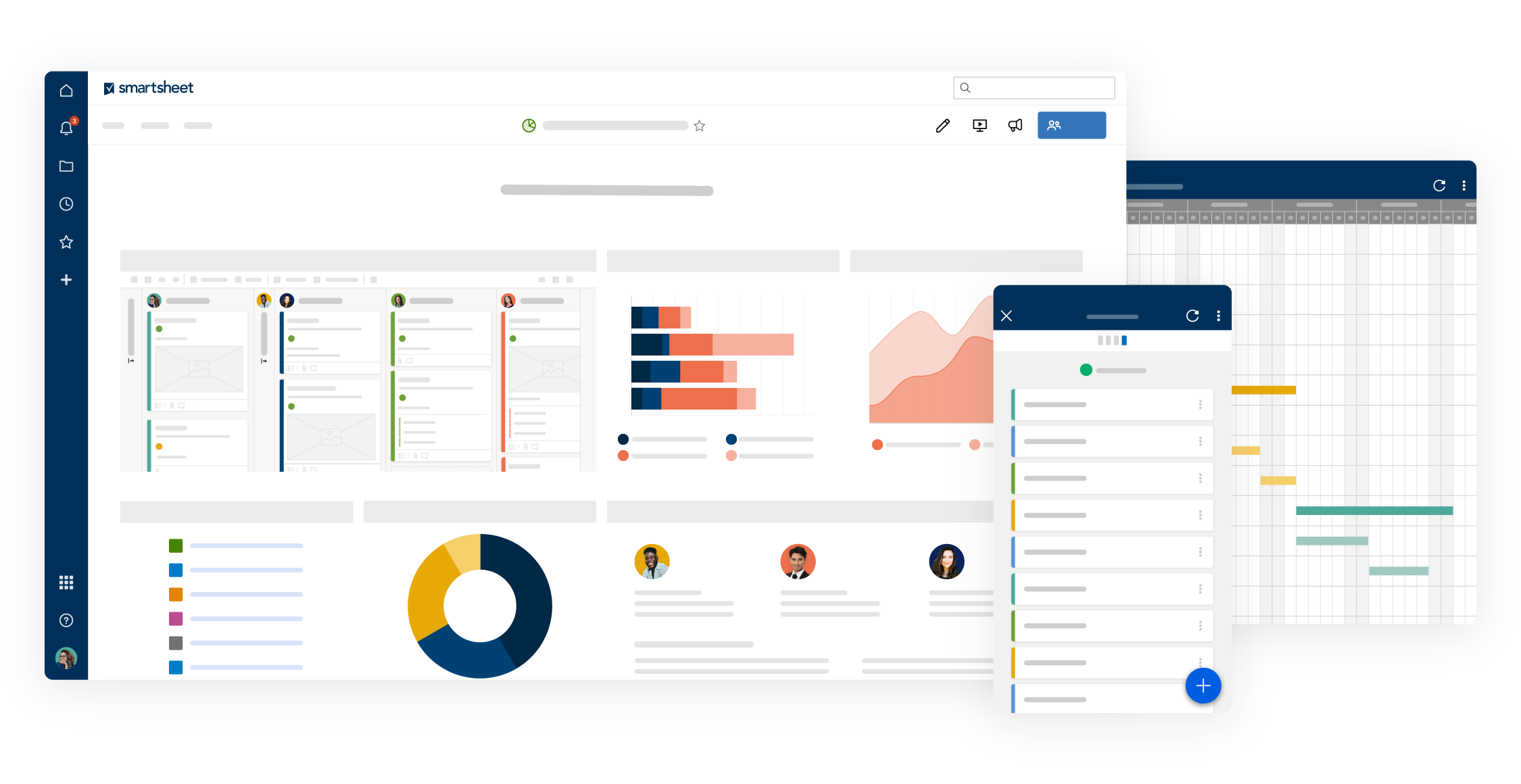
If you follow these best practices, you’ll have a captivating business report that stakeholders can easily understand — and inspire them to take action.
To learn more about this process and to find additional resources, read “Free Startup Plan, Budget & Cost Templates.”
To learn more about this process and to find additional resources, read “Design a Data Dashboard.”
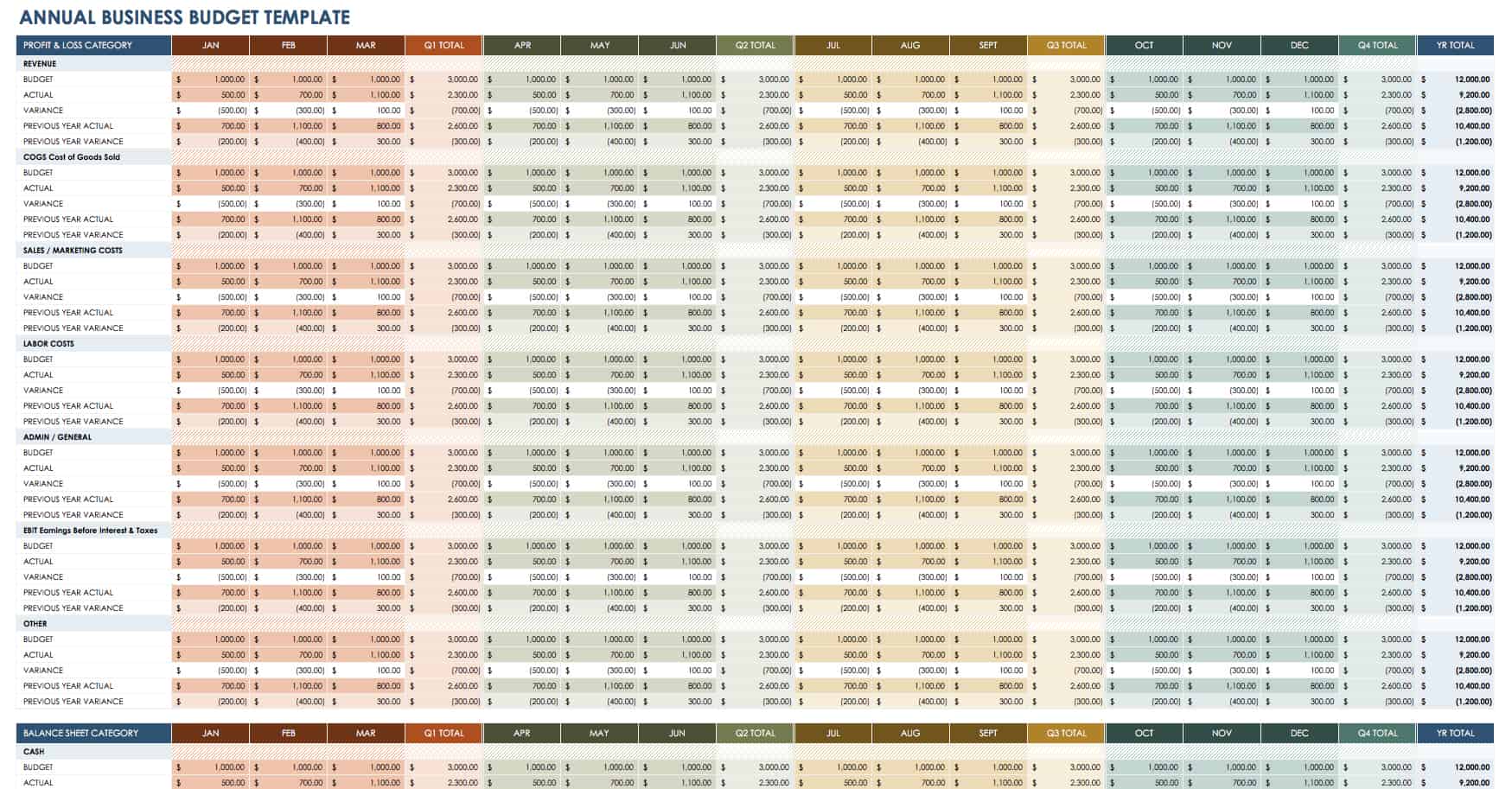
Translate your data into business results instantly with any of the nine free, comprehensive business report templates below, including a simple business report template, a sales and marketing plan template, and a KPI business dashboard template, as well as best practices for writing business reports.
To learn more about this process and to find additional resources, read “All About KPI Dashboards.”
This business budget template will help you track your company’s expenses and develop a balanced budget. Simply enter all budget-related details for your current goods and services (your “operating costs”) to immediately see if you’re under or over budget in a particular area. Use this template to gain fast insight into your assets and liabilities, and see how profitable — or close to profitable — your company actually is.
Business reports are a key tool in translating complex information into easy-to-understand, visual communication. In this article, you’ll find a roundup of the top business report templates to make use of your data.
Smartsheet Contributor Kate Eby on Jan 12, 2020
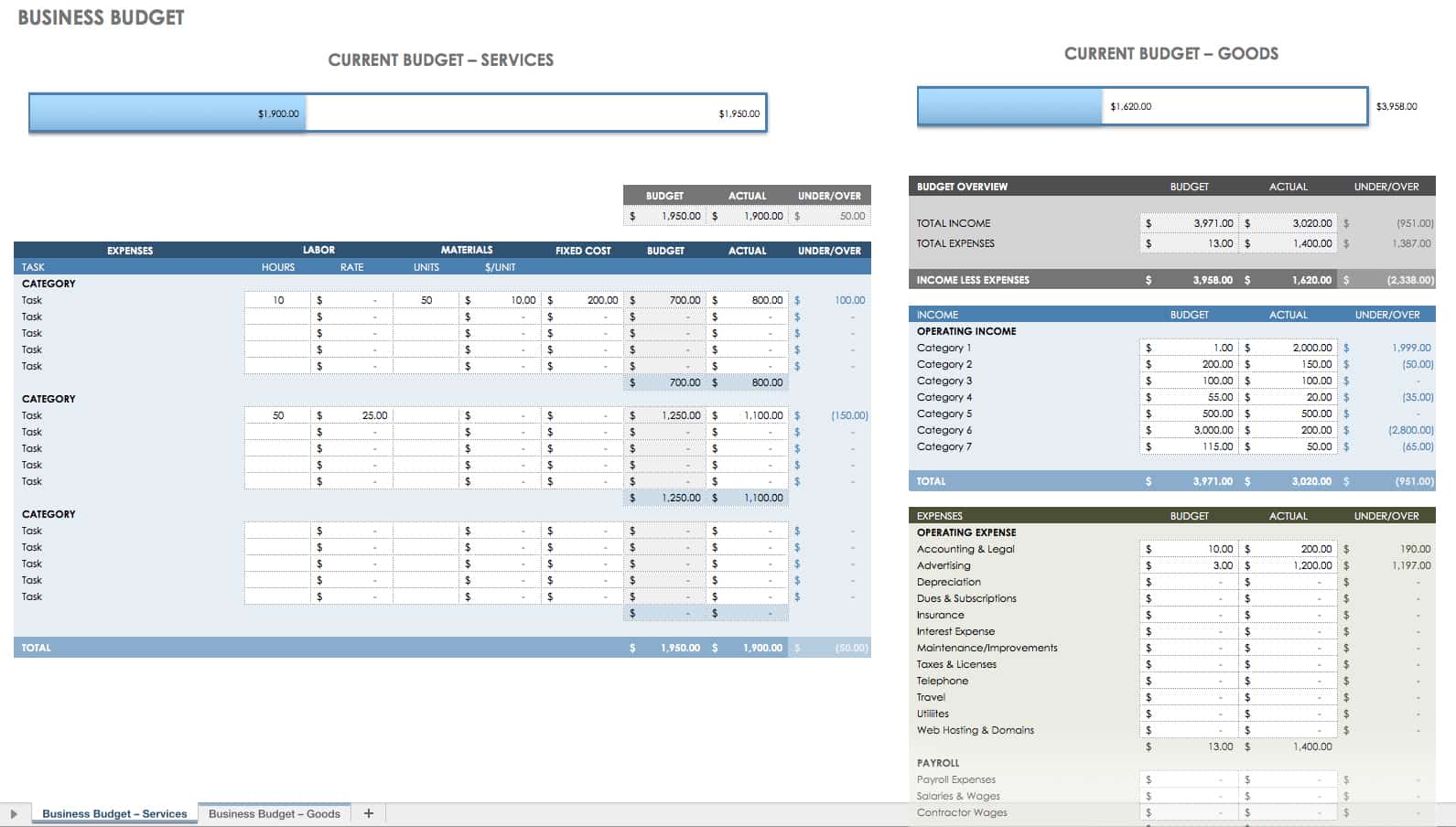
- Executive Summary: Include an overview of your project that addresses brief business background, project objectives, risks and issues, progress, outcomes, and customer profile details.
- Financial Evaluation: Enter investment expenditure and methods, expected productivity, and projected financial ranking information.
- Key Project Activities: List project-specific activities required for a winning project.
- Market Analysis: Provide a market description, pricing structure, your target audience, and other market analysis-related details.
- Marketing Assessment: Detail price, product, place, and promotion specifics for the project.
- Operational Planning: Specify business models, along with your financial plan, management, and business structures (as are relevant to the project in question).
- SWOT Analysis: A SWOT analysis identifies strengths, weaknesses, opportunities, and threats — both internal and external — related to your project.
To learn more about this process and to find additional resources, read ”The Benefits of a Strong Executive Summary.”
Key performance indicators (KPIs) help you measure effectiveness and determine how close you are to achieving your objectives. This KPI business dashboard template gives you an at-a-glance view of your business’s financials, so that you can gauge the success of your business. This visually rich dashboard template gives you quick and easy insight into your company’s fiscal health with sections for budget, revenue, profit margin, and debt-to-equity ratio.
